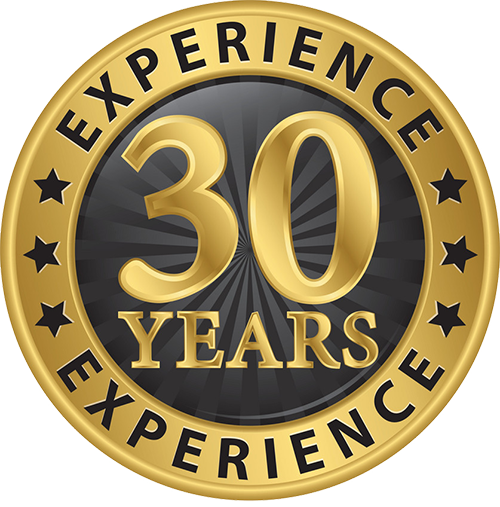Optimising forklift fleet size – a guide to efficiency and cost-effectiveness
We all know that forklifts are the workhorses of warehousing and logistics and a well-optimised forklift fleet is the engine room of efficient operations. If you’re looking at making improvements in your business, you can significantly increase productivity and reduce your costs by carefully considering forklift type and capacity, operational needs, maintenance and which technology you end up going with.
First things first, do an operational needs assessment
Before diving into fleet optimisation, evaluating your operational needs thoroughly is crucial.
Here are a few things you will want to consider.
Workload analysis
Understanding your warehouse's workload is fundamental. Analyse your peak and off-peak periods along with the frequency and volume of material movement. It’s also important to take into account the types and weights of loads your forklifts will be handling. This information will help you determine the optimal number of forklifts required.
Warehouse layout and space
Your warehouse's layout and space constraints significantly impact what forklifts you might select. You will want to consider factors like aisle widths, storage heights and traffic patterns. Narrow aisles might mean compact reach trucks or turret trucks are a better option for you, while spacious warehouses might accommodate larger counterbalance forklifts.
Shift patterns and staffing
Consider your shift patterns and staffing levels to determine the number of forklifts needed to cover all operations adequately. Account for potential absenteeism and overtime, and plan for emergency and contingency situations.
Think about the forklift type and capacity you may need
Inefficient material handling can hinder your productivity and increase your costs. Choosing the right forklift can help overcome these challenges and really optimise your warehouse operations. Let's delve into the key factors to consider when selecting the perfect forklift for your business.
Load capacity
The weight and size of the loads your staff are going to handle will dictate what forklift capacity you need. Ensure that your forklifts are capable of handling the heaviest and bulkiest items in your warehouse.
Forklift type
Selecting the right forklift type for specific tasks is essential. Counterbalance forklifts are versatile and suitable for general material handling, while reach trucks excel in narrow aisle environments. Order pickers are great for picking items from high shelves, and tow tractors are used for transporting multiple loads simultaneously.
Power source
The choice of power source (electric, ICE, LPG or CNG) depends on various factors, including environmental regulations in your area, fuel availability and operational requirements. Electric forklifts are eco-friendly and energy-efficient, while ICE (internal combustion engine) forklifts offer greater power and durability.
Think about potential maintenance and downtime requirements
Unplanned forklift breakdowns will disrupt your operations and can lead to significant losses. Avoid this by proactively addressing maintenance needs and training your operators. This way, you can minimise any potential downtime and optimise your supply chain.
Maintenance schedule
Implement a rigorous maintenance schedule for each forklift to help prevent breakdowns. Preventive maintenance, such as regular oil changes and tyre inspections, will significantly extend the lifespan of your equipment.
Downtime management
Minimise downtime by having a plan for handling equipment failures and repairs. Maintain a sufficient inventory of spare parts or have someone on hand or establish relationships with reliable repair services like Eureka Forklifts to ensure you always have access to spare parts and repairs.
Operator training
Properly trained operators are essential for a safe and efficient workplace. Provide comprehensive training programs that cover safety procedures, forklift operation and effective load-handling techniques.
Do a cost analysis before making a decision
Before investing in new forklifts, it's essential to do a thorough cost analysis. Think about buying outright versus rental, operating costs, depreciation and insurance.
Purchase vs rental
Evaluate the long-term costs of purchasing forklifts versus the short-term flexibility of renting. You will want to consider factors like initial investment, maintenance costs and the residual value of the machine you end up purchasing (if you decide to go that way).
Operating costs
Analyse your operating costs to include things like fuel consumption, maintenance expenses and labour costs. You can reduce costs through energy-efficient practices and optimising your maintenance schedules.
Depreciation
Factor in the depreciation of forklift assets over time. The impact of depreciation on your overall fleet management strategy can impact your long-term financial planning and asset replacement decisions.
Insurance
We know everyone hates it, but you also really do need it. Adequate insurance coverage is crucial to protect your investment. Consider comprehensive insurance policies that cover both property damage and potential liability claims.
Ultimately, optimising your forklift fleet is a strategic decision that can positively impact your warehouse operations. By carefully considering all the above factors, you can create a highly efficient and cost-effective material handling solution for your business.
Keep in mind that having a well-cared-for and properly used forklift fleet really is the heart of a successful warehouse operation!

